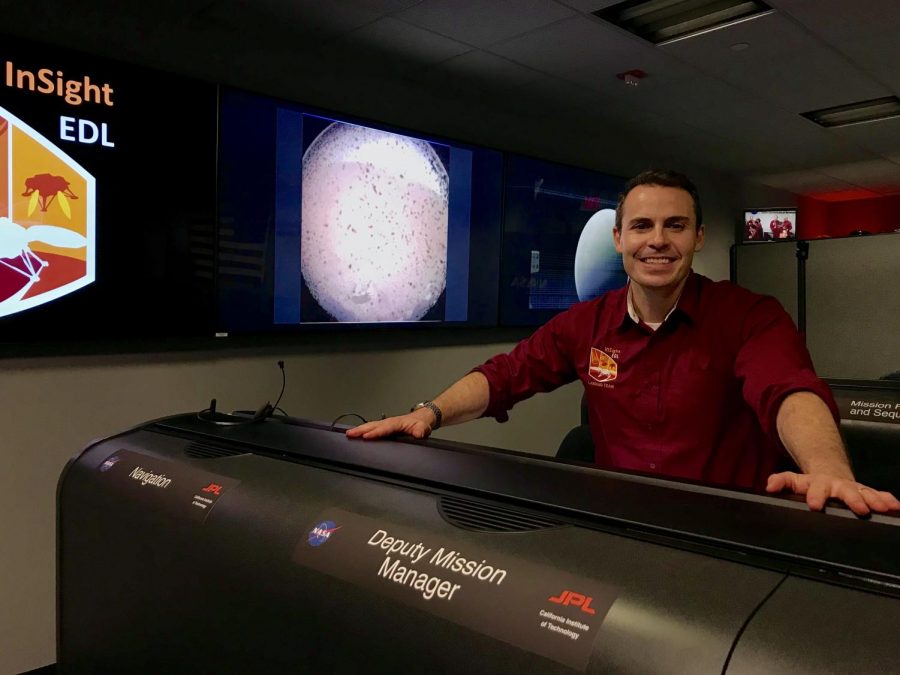Q: Specifically, what was your role in NASA’s Jet Propulsion Laboratory? What is the planning process, etc.?
A: I have been working at NASA for 17 years. The last 15 at NASA’s Jet Propulsion Laboratory (JPL) in Pasadena, CA where I have been supporting the Mars Exploration Program Office. I was the Trajectory Lead for the Mars Science Laboratory Project which landed the Curiosity Rover on Mars in 2012. I was appointed as the Mission Design and Navigation Manager for the InSight lander in late 2012 and served as the Deputy Mission Manager from launch through landing. I am currently working as the Mission Design and Navigation Manager for the Mars 2020 rover.
Q: We spoke with Dr. Swartwout, who was on your master’s thesis committee. He mentioned that you were excited to learn about space exploration. What prompted your enthusiasm for space?
A: I was born in Madrid, Spain and I perfectly remember the day my parents took me to visit NASA’s Deep Space Communications Complex in the outskirts of Madrid. I was only 7 years old but I was in awe when I first saw the massive 70-m dish. Since I was a kid, I was fascinated by space and seeing that facility from up close made me feel that exploring the Solar System was not science fiction, that perhaps, someday I would be able to contribute to space exploration.
Q: Why did you decide to design a human colonization project for Mars for your master’s thesis? When did you become interested in Mars as a place that people can inhabit?
A: Mars is a fascinating planet. We know today that 3.5 billion years ago, Mars featured rivers, lakes, and even oceans. There were significant quantities of water on the Martian surface. Today, Mars looks very dry but still holds some amount of frozen water under the surface and in the polar caps. The Curiosity rover has sent data that indicates that Gale Crater most likely had the conditions necessary to support microbial life in the past. Finding evidence of past life on Mars would be truly groundbreaking. Mars has many in-situ resources to support a human expedition. Establishing a human base on Mars would allow us to expand our civilization beyond Earth. My Master’s thesis was focused on optimizing trajectories between Earth and Mars but I was so incredibly fascinated by the subject that my thesis work turned into the development of a full architecture to send a human mission to the Red Planet.
A: How did your education at SLU help propel you to your success at NASA?
Q: My professors at Parks had a significant impact in my career and I am very thankful to them for that. I had strong interests in the fields of Astrodynamics and Orbital Mechanics and they gave me a strong foundation for the technical knowledge I have today. I keep great memories from my time at SLU.

